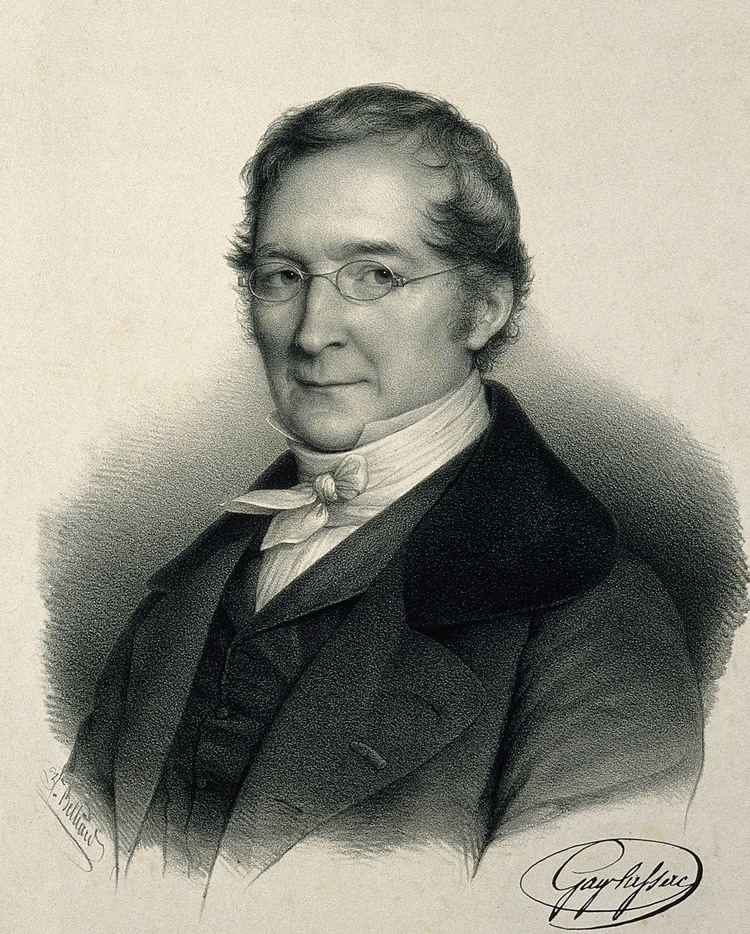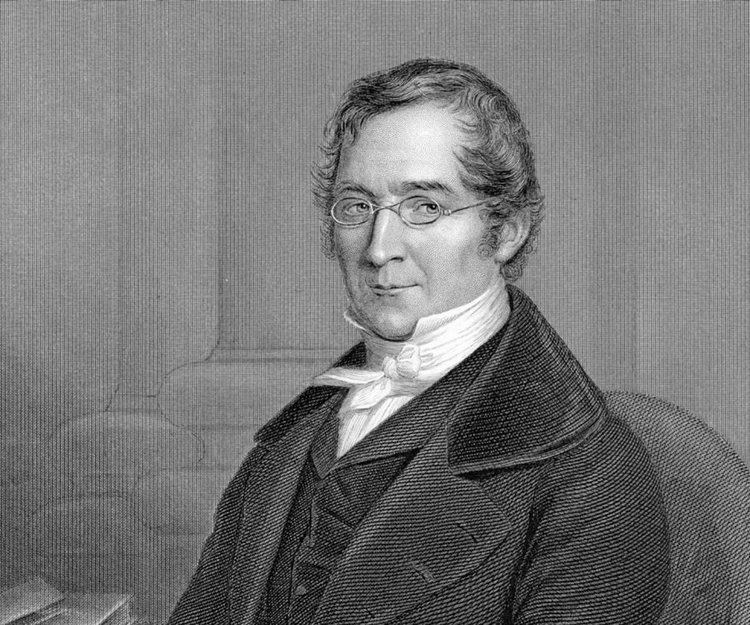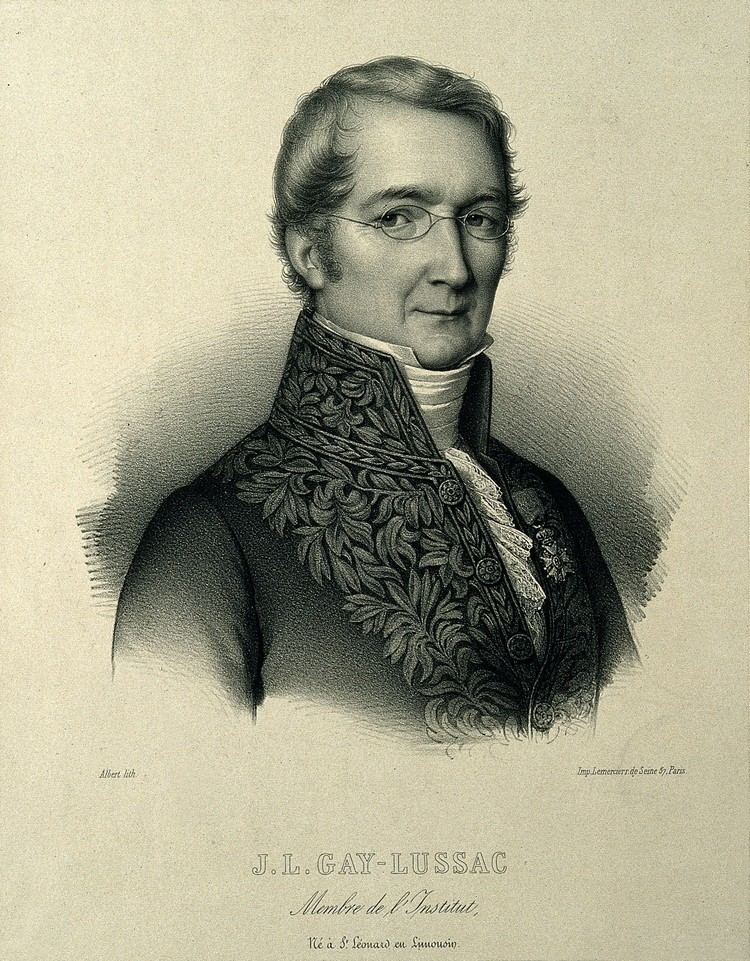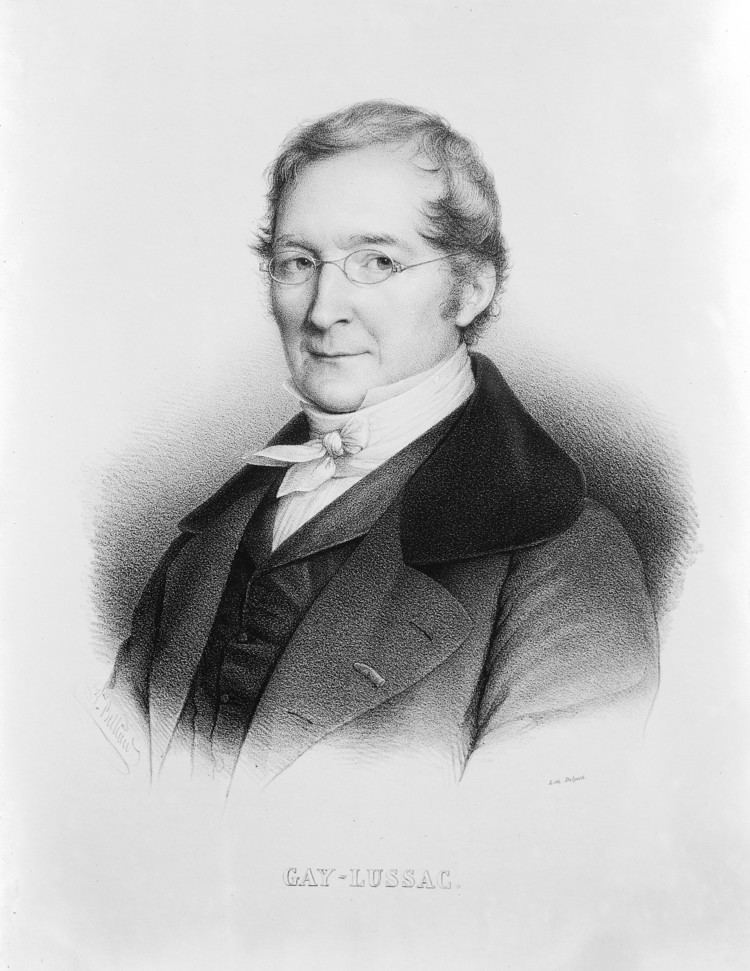Nationality French Name Joseph Gay-Lussac Role Chemist | Alma mater Ecole polytechnique Discovered Boron | |
 | ||
Born 6 December 1778Saint-Leonard-de-Noblat ( 1778-12-06 ) Died May 9, 1850, Paris, France Education Ecole Polytechnique (1797–1800) Children Jules-Alexandre Gay-Lussac Parents Antoine Gay-Lussac, Leonarde Bouriquet Similar People Amedeo Avogadro, Louis Jacques Thenard, John Dalton, Humphry Davy, Antoine Lavoisier | ||
Iyc2011 its chemistry eh joseph louis gay lussac wmv
Joseph Louis Gay-Lussac (; [ʒɔzɛf lwi ɡɛlysak]; also Louis Joseph Gay-Lussac; 6 December 1778 – 9 May 1850) was a French chemist and physicist. He is known mostly for his discovery that water is made of two parts hydrogen and one part oxygen (with Alexander von Humboldt), for two laws related to gases, and for his work on alcohol-water mixtures, which led to the degrees Gay-Lussac used to measure alcoholic beverages in many countries.
Contents
- Iyc2011 its chemistry eh joseph louis gay lussac wmv
- Joseph louis gay lussac
- Biography
- Achievements
- Publications
- References

Joseph louis gay lussac
Biography

Gay-Lussac was born at Saint-Léonard-de-Noblat in the present-day department of Haute-Vienne.

The father of Joseph Louis Gay, Anthony Gay, son of a doctor, was a lawyer and prosecutor, and worked as a judge in Noblat Bridge. Father of two sons and three daughters, he owned much of the Lussac village and usually added the name of this hamlet of the Haute-Vienne to his name, following a custom of the Ancien Régime. Towards the year 1803, father and son finally adopted the name Gay-Lussac. During the Revolution, on behalf of the Law of Suspects, his father, former king's attorney, was imprisoned in Saint Léonard from 1793 to 1794.

He received his early education at the hands of the Catholic Abbey of Bourdeix, though later in life became an atheist. In the care of the Abbot of Dumonteil he began his education in Paris, finally entering the École Polytechnique in 1798. Gay-Lussac narrowly avoided conscription and by the time of entry to the École Polytechnique his father had been arrested (due to Robespierre's Reign of Terror). Three years later, Gay-Lussac transferred to the École des Ponts et Chaussées, and shortly afterwards was assigned to C. L. Berthollet as his assistant. In 1802, he was appointed demonstrator to A. F. Fourcroy at the École Polytechnique, where in (1809) he became professor of chemistry. From 1808 to 1832, he was professor of physics at the Sorbonne, a post which he only resigned for the chair of chemistry at the Jardin des Plantes. In 1821, he was elected a foreign member of the Royal Swedish Academy of Sciences. In 1831 he was elected to represent Haute-Vienne in the chamber of deputies, and in 1839 he entered the chamber of peers. He was elected a Foreign Honorary Member of the American Academy of Arts and Sciences in 1832.
Gay-Lussac married Geneviève-Marie-Joseph Rojot in 1809. He had first met her when she worked as a linen draper's shop assistant and was studying a chemistry textbook under the counter. He fathered five children, of whom the eldest (Jules) became assistant to Justus Liebig in Giessen. Some publications by Jules are mistaken as his father's today since they share the same first initial (J. Gay-Lussac).
Gay-Lussac died in Paris, and his grave is there at Père Lachaise Cemetery. His name is one of the 72 names inscribed on the Eiffel Tower.
